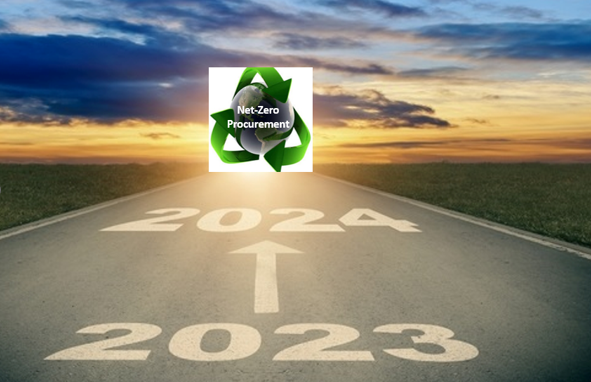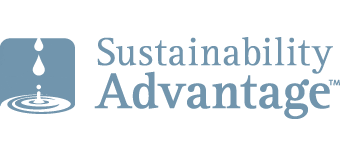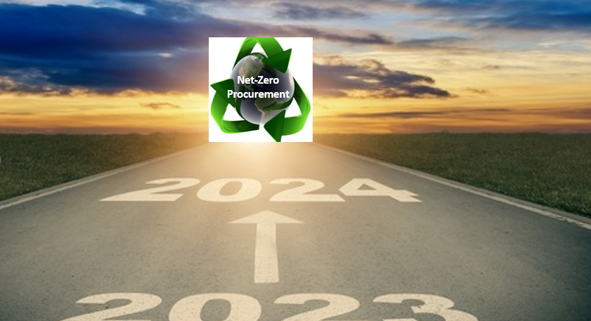Procuring My 2024 New Year’s Resolution

(This blogs builds on several other of my blogs about Net-Zero Procurement in the last couple of years.)
Another year, more opportunities. I just posted my 2023 Annual Integrated Report to my website. It includes both a look back and a strategic look forward. Pulling it together prompted me to recommit to this resolution for 2024.
In 2024, I will help develop and test an SME-friendly online questionnaire that scores any supplier on their commitment to science-based targets (SBTs) for greenhouse gas (GHG) reductions.
Why? It’s the missing link in a net-zero procurement system, which is our last, best hope of addressing the climate crisis, in time.
The climate crisis is worsening
A couple of reports this month made it clear that this is a make-or-break year for action on the climate emergency.
- Copernicus Climate Change Service report: The average global temperature was 1.48˚C above pre-industrial levels in 2023. This is perilously close to the 1.5˚C mark, after which all bets are off.
- WEF Global Risks Report 2024: Out of 34 identified risks to global economies, “Extreme Weather Events” are in the top two most severe risks, in both the short and long term.
As a father and a grandfather, the climate crisis has bubbled to the top of my priority list. We have to fix this emergency.
The business community is not committed to helping
To fix the climate crisis, we must mobilize the entire business community in the race to meet SBTs for their GHG reductions. A December BDC report found that businesses are responsible for 80% of annual GHG emissions in Canada. Surprisingly, small- and medium-sized enterprises (SMEs) are responsible of 52% of those emissions by Canadian businesses. So,SMEs are responsible for 41% of Canadian GHG emissions. (52% x 80% = 41%). However, the BDC report found that 32% of SMEs have no intention of taking action to reduce their GHGs. Plus, only 52% of TSX Index companies have committed to GHG emissions reduction targets. That means that 48% of larger, listed companies have not committed to SBTs. The climate crisis will never be fixed with this level of corporate indifference.
Net-zero procurement is an untapped market force.
The fastest, most effective way to engage the entire business community, including SMEs, in the race to net-zero is to unleash the power of procurement. That is, we need all buyers to attach significant weight to supplier commitment to net-zero science-based targets (SBTs). However, the latest CDP Global Supply Chain Report found that less than 3% of buyers require suppliers to disclose climate related data, and only 0.04% of all companies require suppliers to set SBTs. No wonder suppliers aren’t engaged in fixing the climate crisis.
Clearly, Net-Zero Procurement (NZP) is an untapped market force. It ensures that organizations receive best value for money by purchasing the most low-carbon goods & services from suppliers who are most committed to science-based targets (SBTs) for GHG reduction. Federal, state / provincial / territorial, and municipal governments that have declared a climate emergency are good candidates for net-zero procurement systems. So is any company that is concerned about its Scope 3 emissions and wants to use their buying power to incentivize their suppliers to reduce their GHGs.
How net-zero procurement would work
- All suppliers in the organization’s vendor database would be sent a net-zero ambition disclosure questionnaire. It scores suppliers on their commitment to SBTs, and gives bonus points to suppliers who use Net-Zero Procurement with their suppliers and/or help others reduce their GHGs. Supplier scores would become part of suppliers’ / vendors’ profiles and could be updated at any time. New suppliers would complete the assessment as part of their inclusion in the vendor database.
- At tender time, significant weight / points would be allocated to suppliers’ scores in the bid appraisal template. That is, 10%-30% of the points – enough to matter – would be allocated to how committed the supplier is to net-zero targets. This is the signature feature of a Net-Zero Procurement system – it incentivizes supplier commitment to SBTs because suppliers earn more points if they have a high score. If they earn more points than their competitors, they have a better chance to win the bid. If they win the bid, they will grow their revenue. That’s the incentive. Follow the money.
- At contract time with winning suppliers, the terms and conditions would include incentives to complete their near-term GHG reduction plans, and penalties if they don’t. They would also be required to enter the Net-Zero Challenge, or equivalent, and have their scores verified, if they haven’t already.
A critical part a net-zero procurement process is the online net-zero ambition disclosure questionnaire. It will be self-scoring, to reduce the burden on procurement and sustainability staff, It will be SME-friendly, since it is going to all suppliers. It will be comprehensive, similar to the free, open-source Excel-based tool on my website. And it will be available on a scalable platform so that can be readily deployed by governments / businesses / any organization, anywhere.
So, in 2024 I resolve to help develop and test a net-zero disclosure questionnaire that meets these criteria and scores any supplier on their commitment to SBTs for GHG reductions. The stars are aligning on this resolution. This could be the start of something great.
Please feel free to add your comments and questions using the “Leave a reply” comment box under the “Share this entry” social media symbols, below. For email subscribers, please click here to visit my site and provide feedback.




